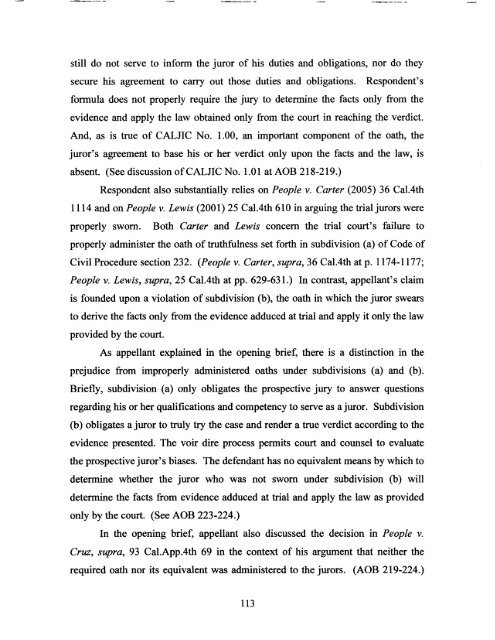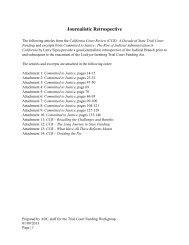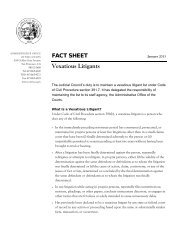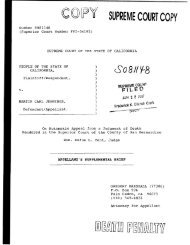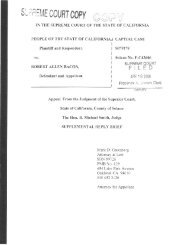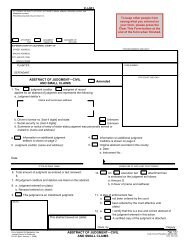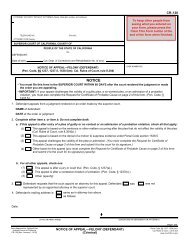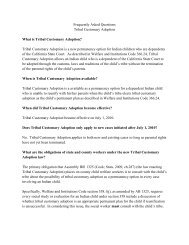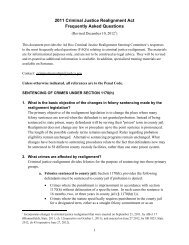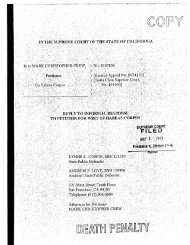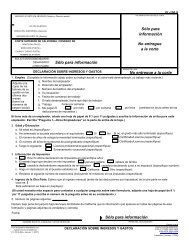Appellant, William Satele, Reply Brief - California Courts - State of ...
Appellant, William Satele, Reply Brief - California Courts - State of ...
Appellant, William Satele, Reply Brief - California Courts - State of ...
Create successful ePaper yourself
Turn your PDF publications into a flip-book with our unique Google optimized e-Paper software.
still do not serve to infonn the juror <strong>of</strong> his duties and obligations, nor do they<br />
secure his agreement to carry out those duties and obligations. Respondent's<br />
fonnula does not properly require the jury to detennine the facts only from the<br />
evidence and apply the law obtained only from the court in reaching the verdict.<br />
And, as is true <strong>of</strong> CALJlC No. 1.00, an important component <strong>of</strong> the oath, the<br />
juror's agreement to base his or her verdict only upon the facts and the law, is<br />
absent. (See discussion <strong>of</strong>CALJlC No. 1.01 at AOB 218-219.)<br />
Respondent also substantially relies on People v. Carter (2005) 36 Ca1.4th<br />
1114 and on People v. Lewis (2001) 25 Ca1.4th 610 in arguing the trial jurors were<br />
properly sworn. Both Carter and Lewis concern the trial court's failure to<br />
properly administer the oath <strong>of</strong>truthfulness set forth in subdivision (a) <strong>of</strong> Code <strong>of</strong><br />
Civil Procedure section 232. (People v. Carter, supra, 36 Ca1.4th at p. 1174-1177;<br />
People v. Lewis, supra, 25 Ca1.4th at pp. 629-631.) In contrast, appellant's claim<br />
is founded upon a violation <strong>of</strong> subdivision (b), the oath in which the juror swears<br />
to derive the facts only from the evidence adduced at trial and apply it only the law<br />
provided by the court.<br />
As appellant explained in the opening brief, there is a distinction in the<br />
prejudice from improperly administered oaths under subdivisions (a) and (b).<br />
<strong>Brief</strong>ly, subdivision (a) only obligates the prospective jury to answer questions<br />
regarding his or her qualifications and competency to serve as a juror. Subdivision<br />
(b) obligates a juror to truly try the case and render a true verdict according to the<br />
evidence presented. The voir dire process pennits court and counsel to evaluate<br />
the prospective juror's biases. The defendant has no equivalent means by which to<br />
determine whether the juror who was not sworn under subdivision (b) will<br />
determine the facts from evidence adduced at trial and apply the law as provided<br />
only by the court. (See AOB 223-224.)<br />
In the opening brief, appellant also discussed the decision in People v.<br />
Cruz, supra, 93 Ca1.AppAth 69 in the context <strong>of</strong> his argument that neither the<br />
required oath nor its equivalent was administered to the jurors. (AOB 219-224.)<br />
113


